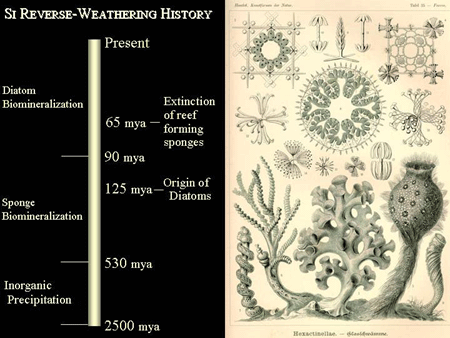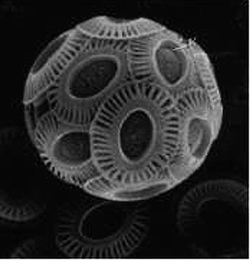
Agency:
Collaborators:
Morel Lab Participants: Allen Milligan, Tung-Yuan Ho, Yeala Shaked
An outstanding question of oceanography is why phytoplankton precipitate hard parts: what physiological and ecological benefits diatoms obtain from their silica frustule? and coccolithophores from their calcite liths? We've been working on the hypothesis that the hard parts of phytoplankton are important in key extracellular enzymatic processes. Our recent results indicate that the silica frustule of diatoms is an excellent buffer for hydrogen ion that enables the rapid conversion of HCO3- to CO2 through the activity of an extracellular carbonic anhydrase enzyme, a key step in the acquisition of inorganic carbon by diatoms. We are presently testing if calcium carbonate liths may likewise enhance the activity of extracellular alkaline phosphatase – an enzyme that liberates orthophosphate from organic compounds – in coccolithophores.



